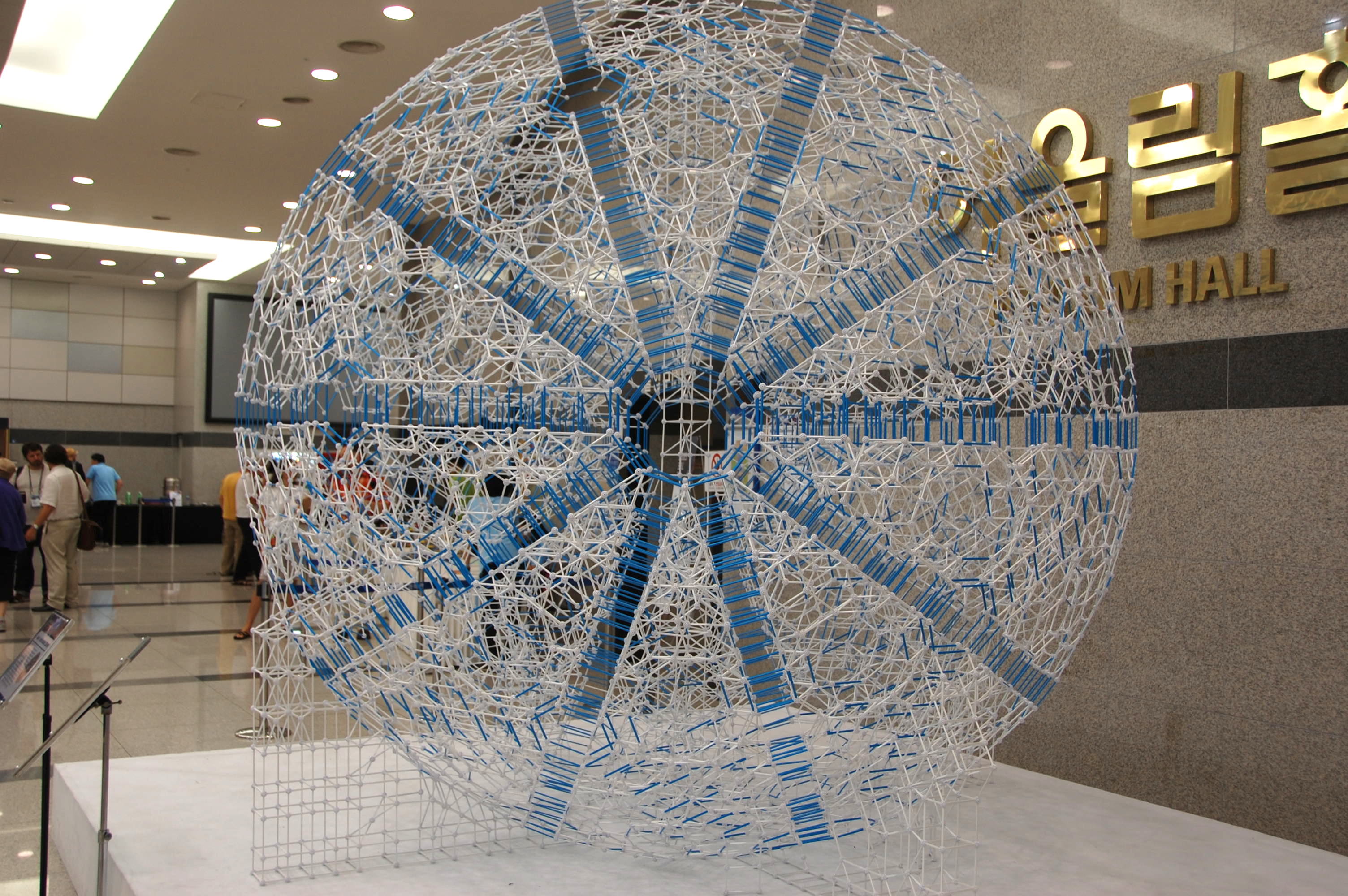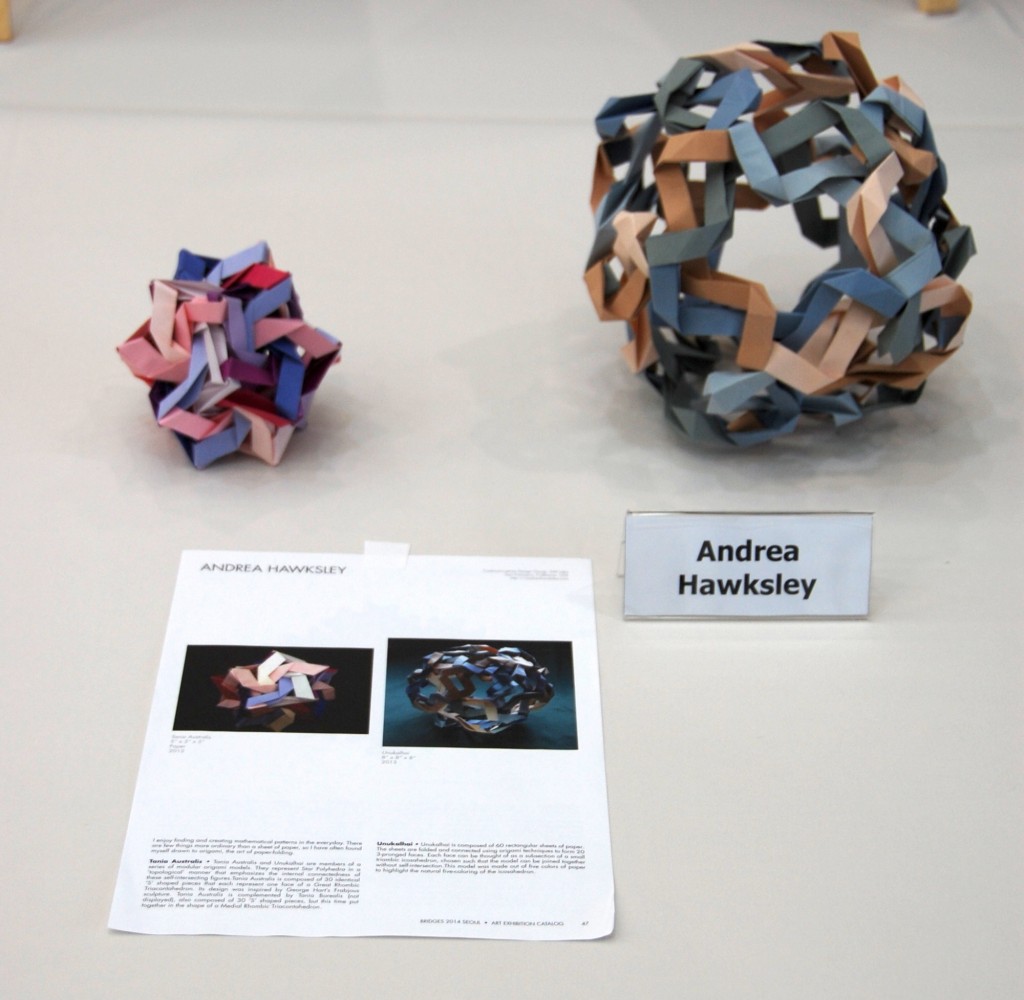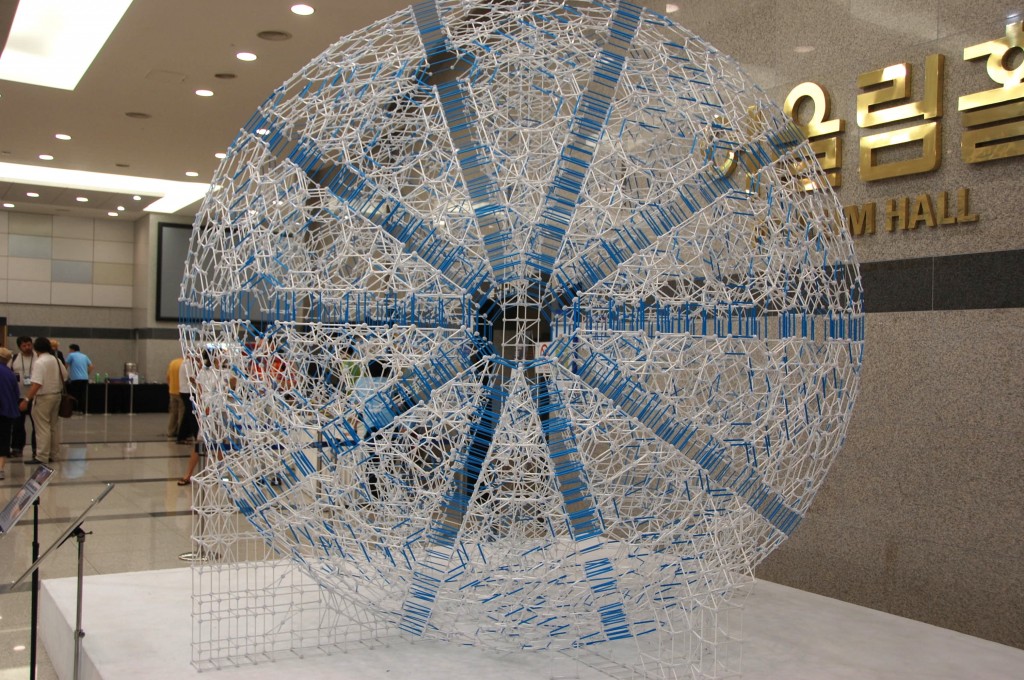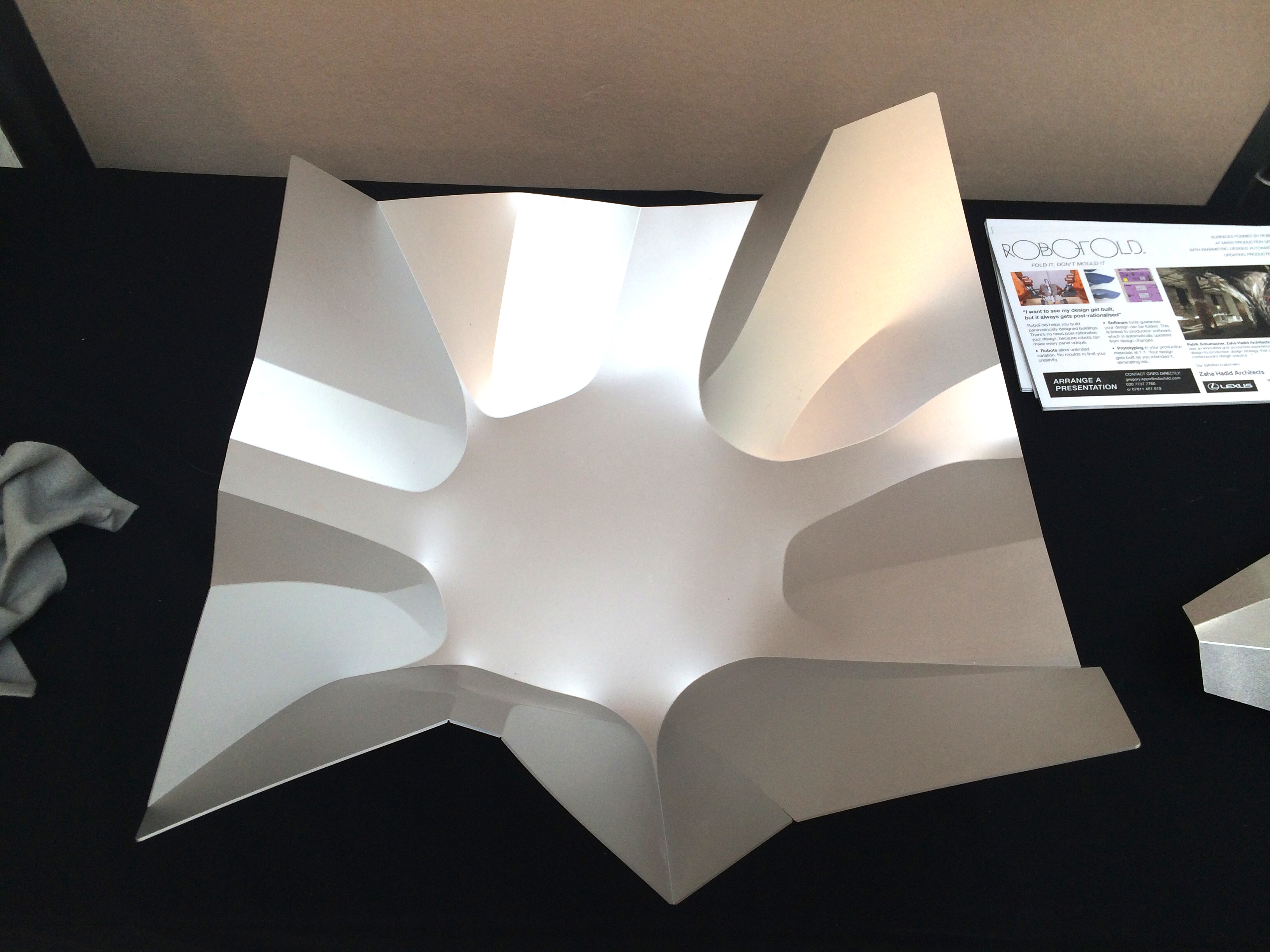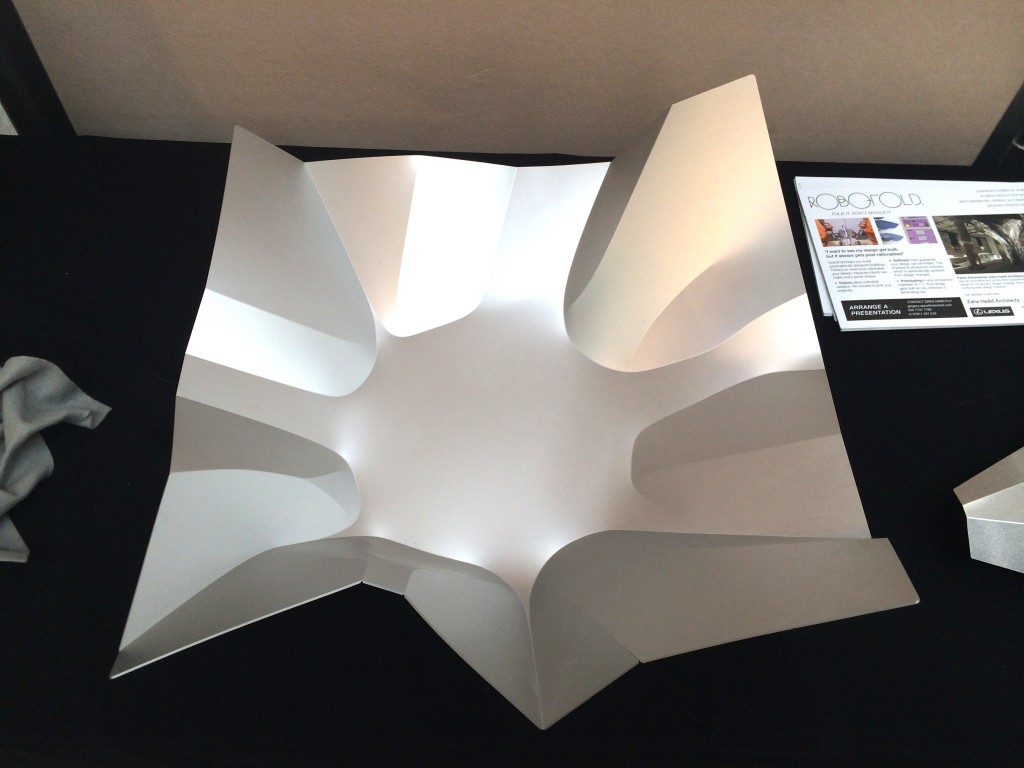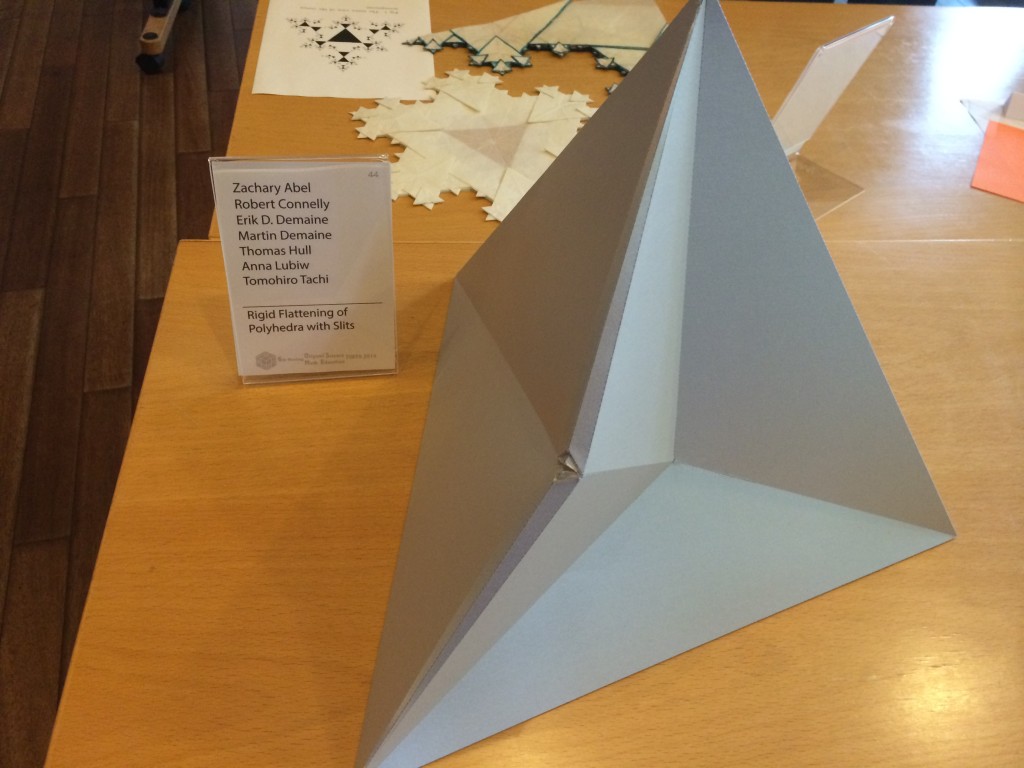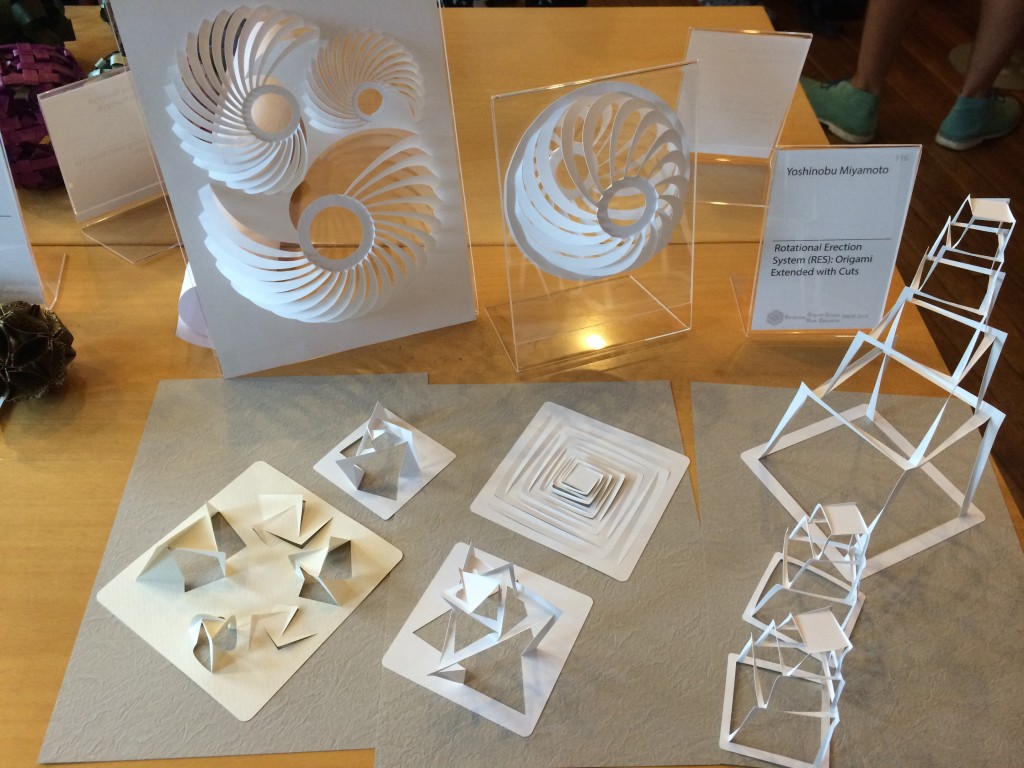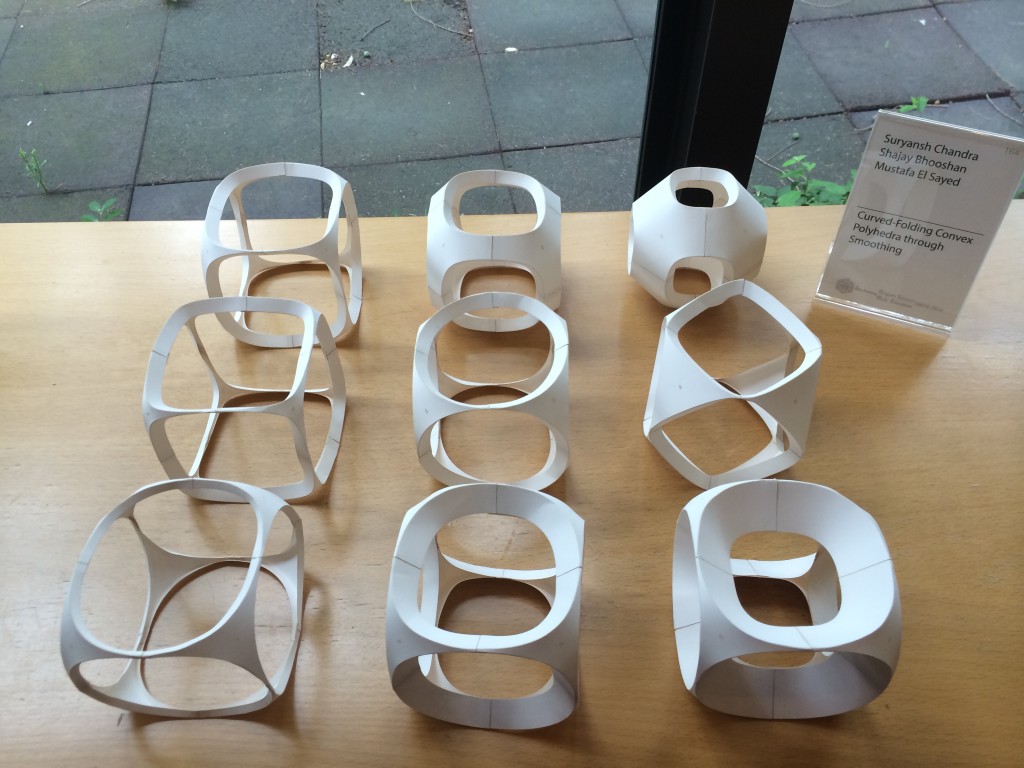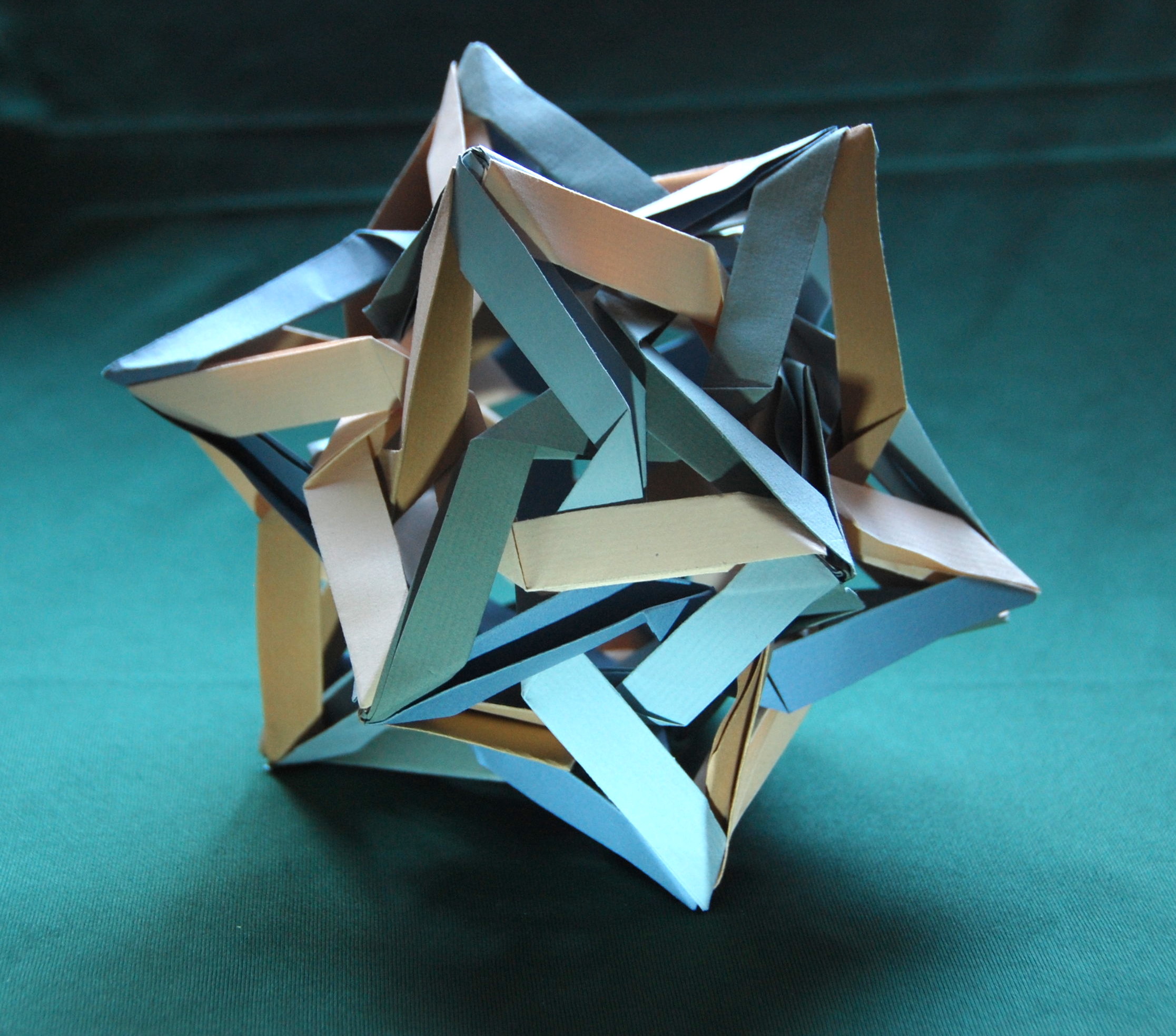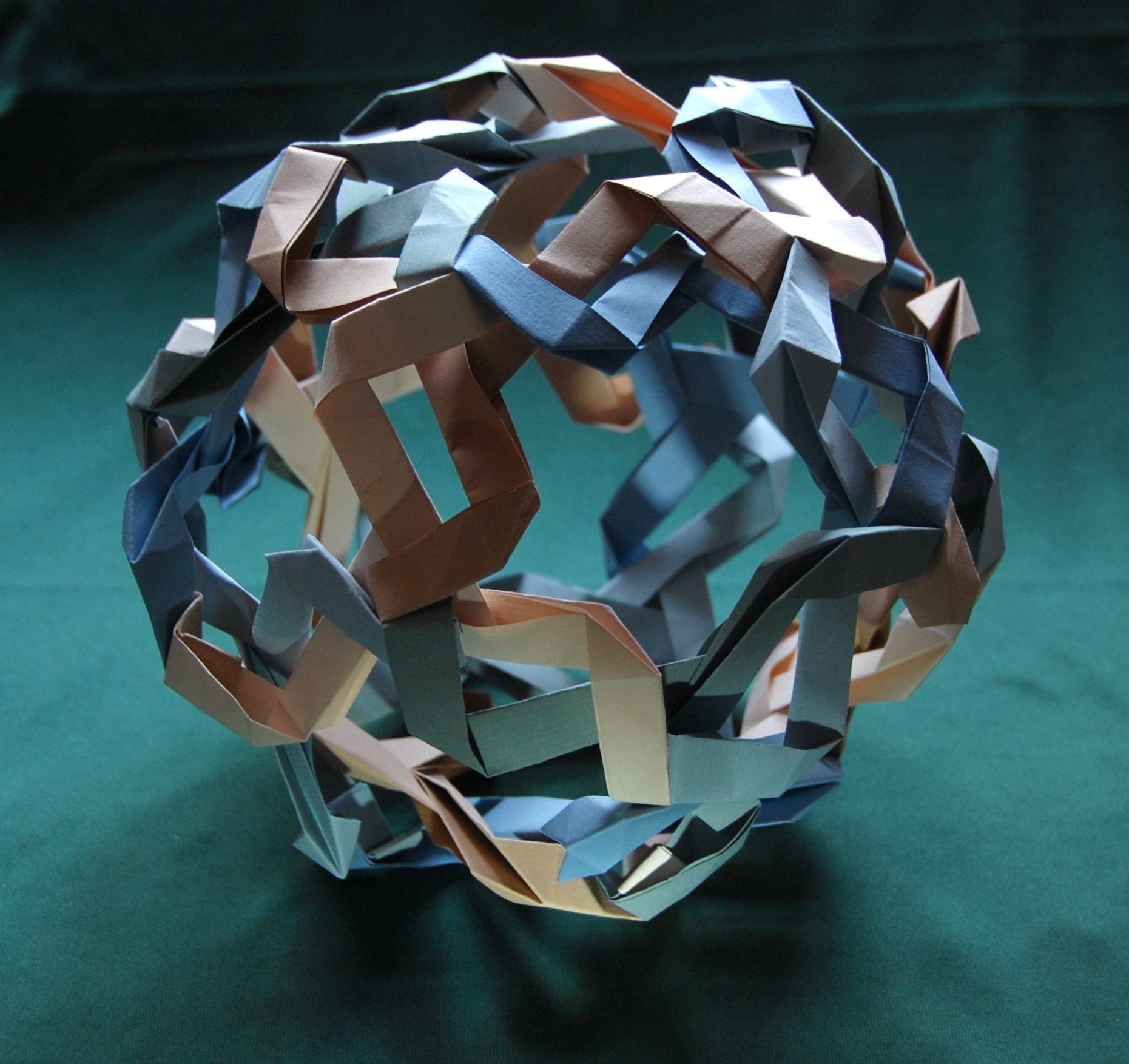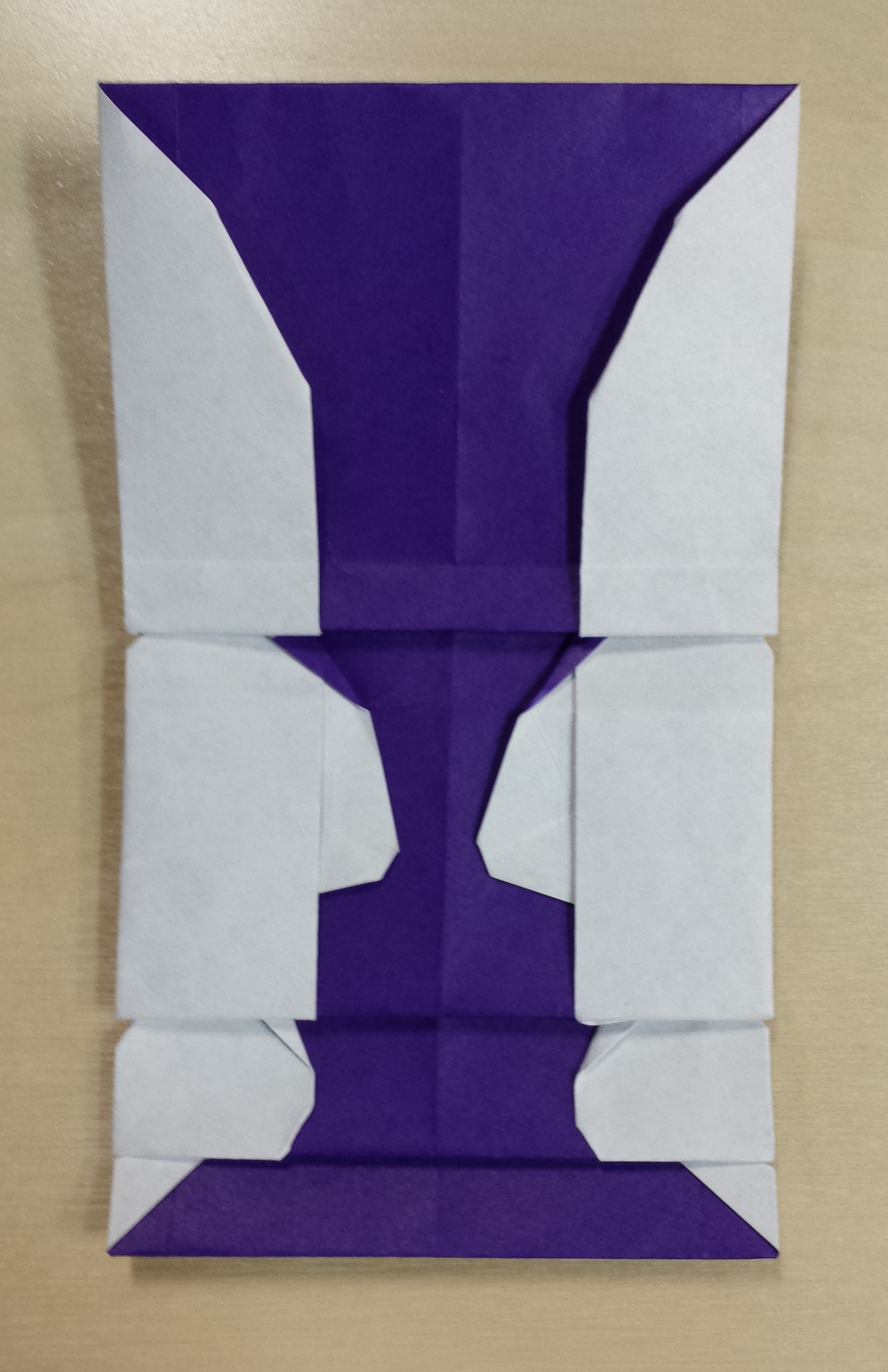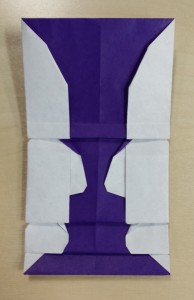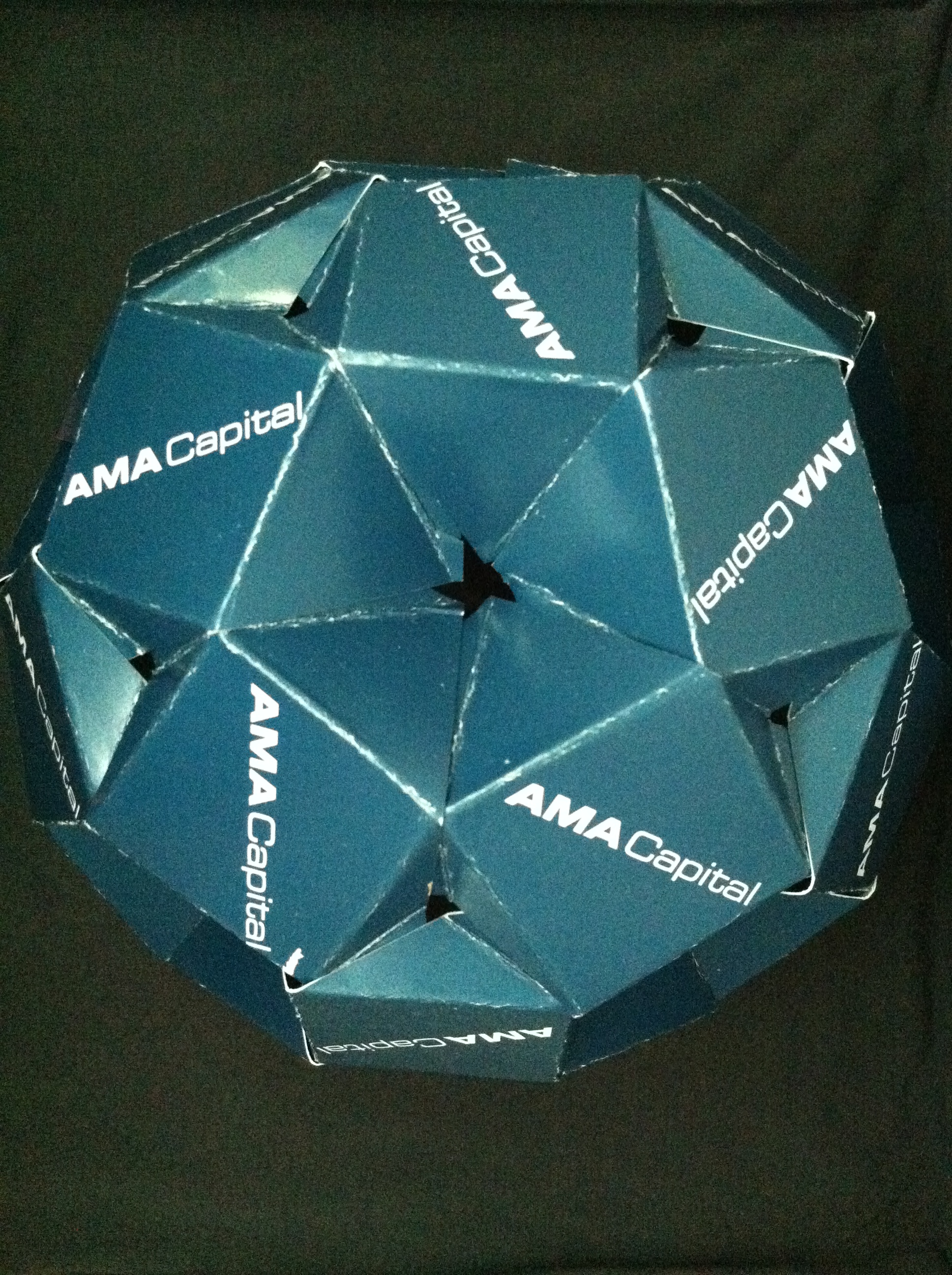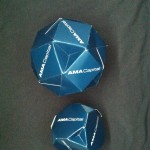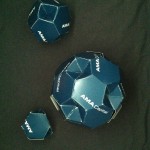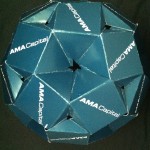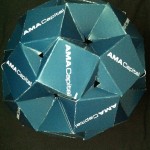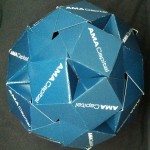It’s conference season, and I just concluded a week in Korea at the Bridges Math Art conference. This was my third time there, although my previous blogging of it has been minimal. Bridges is *the* conference for people interested in mathematical art, and the diversity of work that is shown and presented there is incredibly impressive.
This year I presented a workshop on Binary Dance, which, by participant request, was spontaneously renamed the “Binary Dance Party” to make it more “fun”. I certainly had fun moving around, trading partners, stomping, clapping, and performing assorted binary operations. So much fun, in fact, that I forgot to take pictures. Oops! You can find the full paper on the Bridges archive.
I also showed my origami star polyhedra in the juried art exhibit, helped jury the short movie festival (go watch some of these now!), and acted in the play. By the way, the play, “Scrambled Legs and Bacon”, was a world premiere written by Steve Kennedy and directed by Steve Abbott, both regular Bridges attendees. I played a female graduate student who seemed to spend most of her time solving logic puzzles.
As you can already tell just from the things that I personally had a hand in, Bridges really puts an effort into being about all kinds of math, all kinds of art, and all sorts of connections between them. In addition to the events that I’ve mentioned, there was a mathematical poetry night, a math dance performance by Karl Schaffer, Erik Stern, and Saki, and a few large construction “barn raisings”.
Given my fondness for the 120-cell, it’s no surprise that I was a fan of this giant Zometool omni-truncated 120-cell that was constructed on site, mostly by some highly motivated high school students.
Another highlight of the conference was seeing Noam Elkies and listening to him give his talk on Canons. If you ever get a chance to see Noam Elkies talk about music you absolutely need to go. People were buzzing about his talk for days.
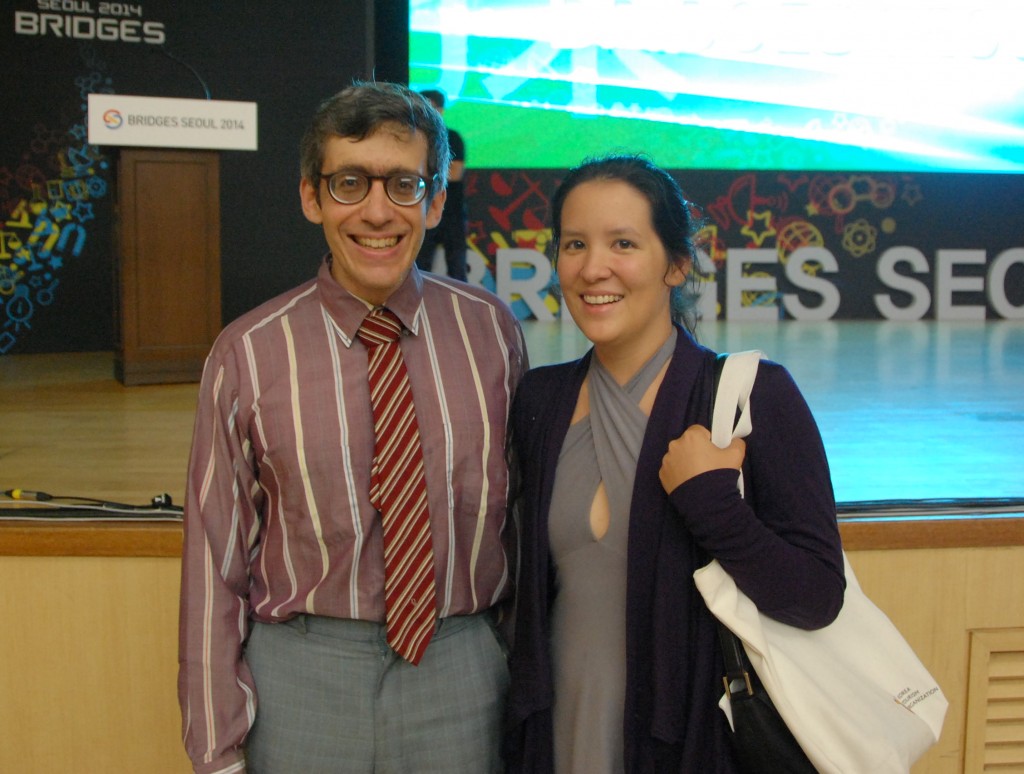 Unlike 6OSME, where the exhibition is supplementary to the accepted papers and presentations, the Bridges exhibition mostly showcases artwork for which there is no presentation (and vice versa). Indeed, at Bridges, the artwork and the papers are juried/refereed separately. However, a few of the talks did match up with pieces in the art exhibition.
Unlike 6OSME, where the exhibition is supplementary to the accepted papers and presentations, the Bridges exhibition mostly showcases artwork for which there is no presentation (and vice versa). Indeed, at Bridges, the artwork and the papers are juried/refereed separately. However, a few of the talks did match up with pieces in the art exhibition.
For example, Carlo Séquin talked about his lego-compatible 3D printed curvy construction pieces and also showed examples of them in the exhibit.
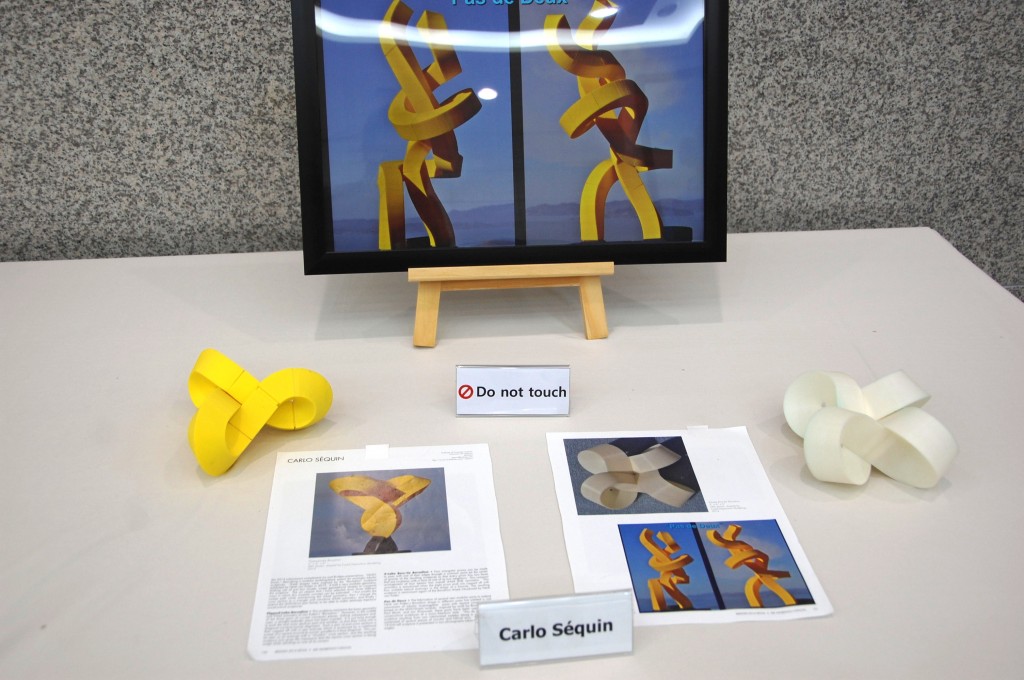 Similarly, Henry Segerman talked about his paper with Vi Hart on creating a physical visualization of the quaternion group, and showed the resulting monkey sculpture in the exhibit.
Similarly, Henry Segerman talked about his paper with Vi Hart on creating a physical visualization of the quaternion group, and showed the resulting monkey sculpture in the exhibit.
Of course, just like 6OSME, way more awesome things happen at Bridges than I can describe in one blog post. Fortunately, everything is well documented and publicly available, so you easily read the papers, view the art exhibition, and watch the film festival from your computer at home. And, if Bridges seems like your sort of thing, then I look forward to potentially meeting you next year at Bridges 2015 in Baltimore, Maryland.
Finally, oh my gosh, tessellating bunny snub cube!

